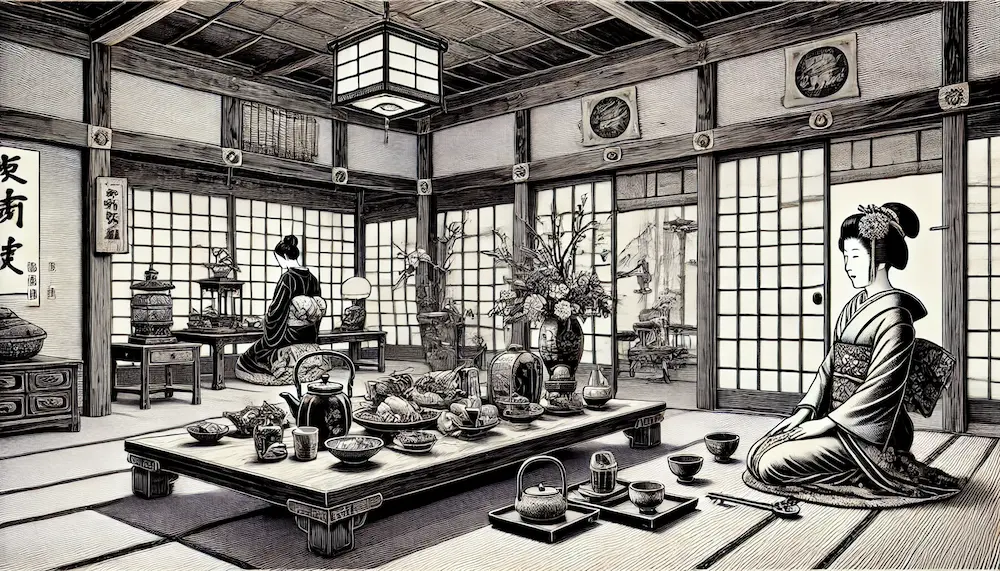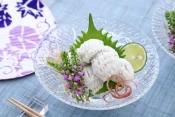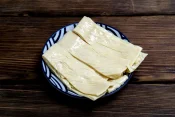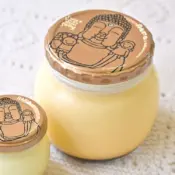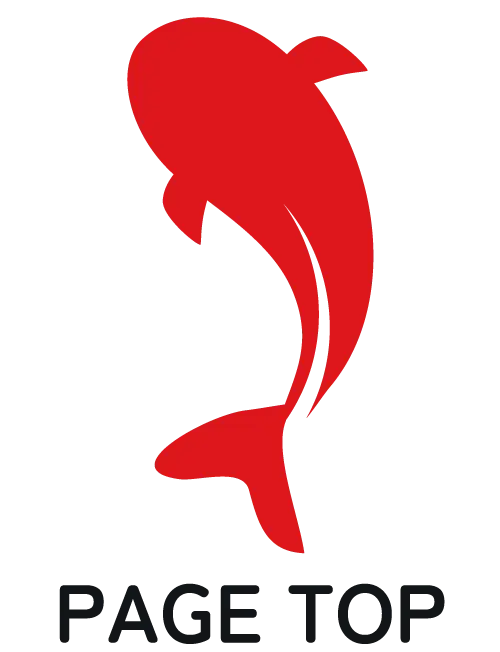Discover the Rich Culinary Heritage of Kyoto: A Journey Through Kyoto’s Food Culture
Kyoto, a city renowned for its temples and gardens, is also a paradise for food lovers. The culinary heritage of Kyoto is a fascinating blend of tradition, seasonal ingredients, and meticulous preparation. This article will take you on a journey through Kyoto’s unique food culture, exploring its history, traditional dishes, seasonal delicacies, and much more.
1. The History of Kyoto’s Food Culture

Kyoto’s food culture dates back centuries, deeply rooted in the city’s history and traditions. The development of Kaiseki cuisine, for example, can be traced to the tea ceremonies of the 16th century. This multi-course meal emphasizes seasonal ingredients, intricate preparation, and aesthetic presentation, reflecting the Zen principles of simplicity and elegance. The influence of the Imperial court and the aristocracy further enriched Kyoto’s culinary landscape, introducing refined tastes and sophisticated techniques.
2. Traditional Kyoto Dishes
Kyoto offers a plethora of traditional dishes that are a testament to its rich culinary heritage.
Kaiseki
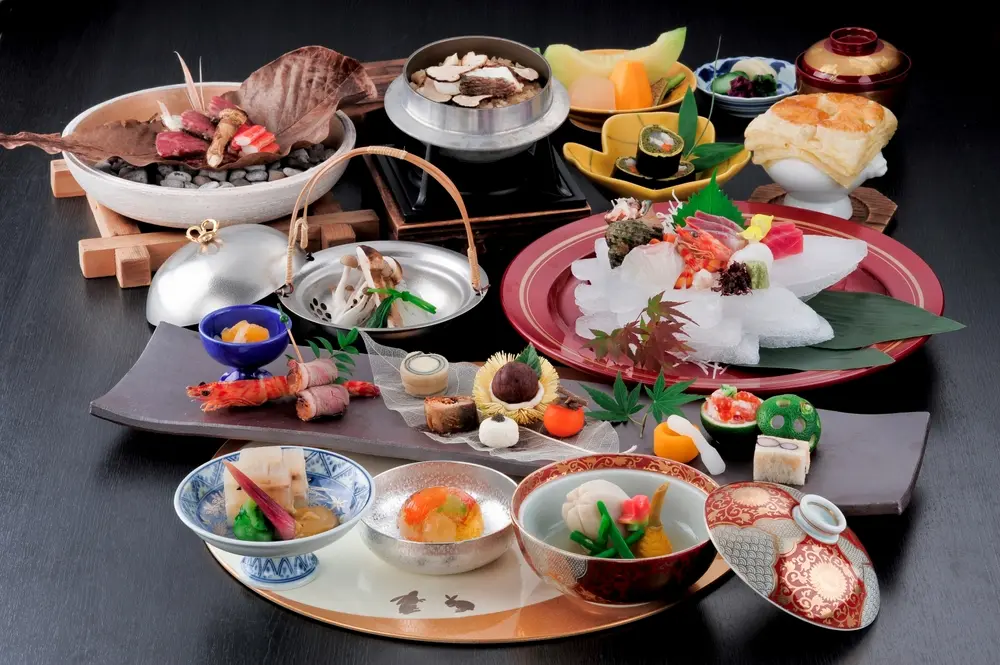
Kaiseki is the epitome of Japanese haute cuisine. A typical Kaiseki meal includes several small courses such as sashimi, grilled fish, simmered vegetables, and a seasonal dessert. Each dish is a masterpiece, meticulously crafted to highlight the natural flavors and beauty of the ingredients.
●Related Posts
→Kaiseki in Kyoto: A Culinary Experience Beyond Compare
Kyoto Cuisine
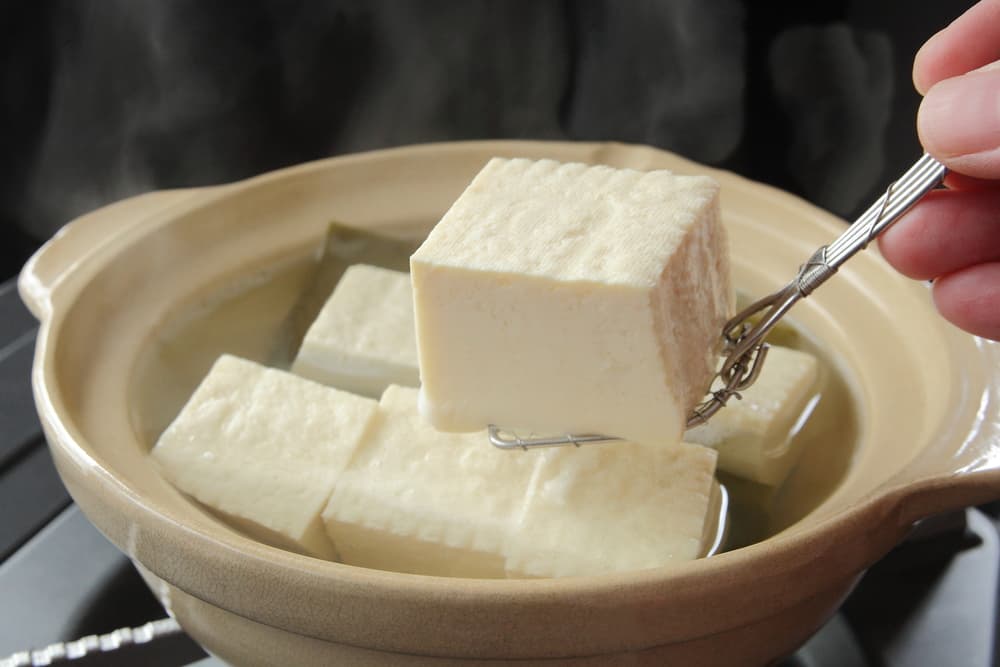
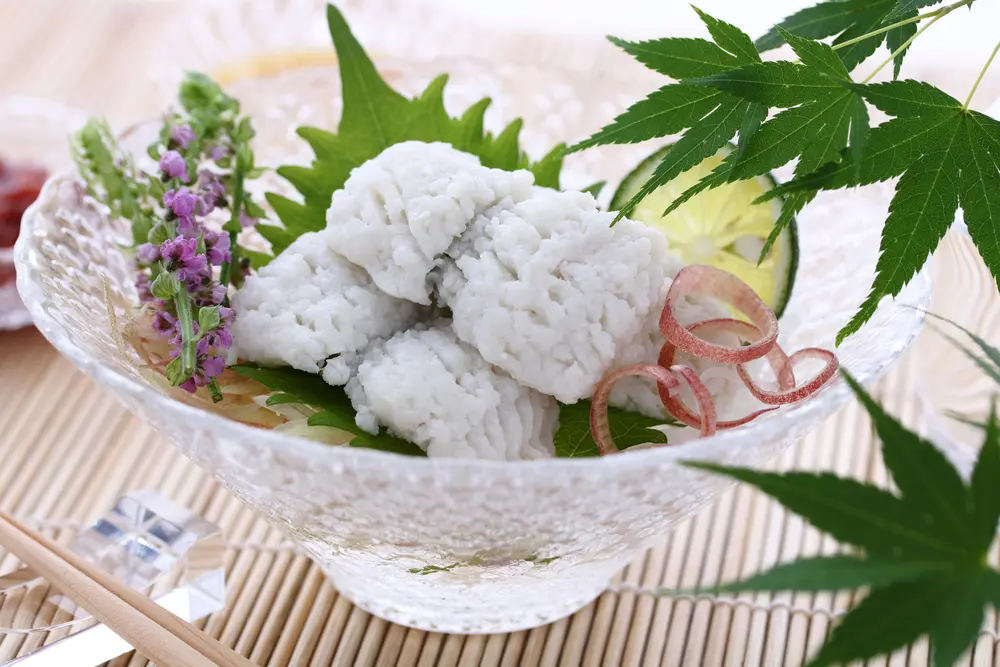

Kyoto cuisine is characterized by its subtle flavors and delicate presentation. Dishes like Hamo (pike conger eel), Kyo-yasai (Kyoto vegetables), and Yudofu (tofu hot pot) are staples. The use of local ingredients like yuba (tofu skin) and Kyo-tsukemono (Kyoto pickles) further enhances the authenticity of Kyoto cuisine.
●Related Posts
→Kyoto’s Summer Delicacy: Hamo, the Exquisite Fish That Embodies Elegance and Tradition
→Savor the Essence of Kyoto: A Culinary Journey Through Kyo-Yasai (Kyoto Vegetables)
→Kyoto Yudofu: A Delicate Japanese Dish That Will Warm Your Soul (and Stomach!)
→Kyoto’s Delicate Delight: Discover the Exquisite World of Yuba
→Kyoto’s Culinary Secret: Kyo-Tsukemono, the Art of Pickles that Elevates Every Meal
Shojin Ryori
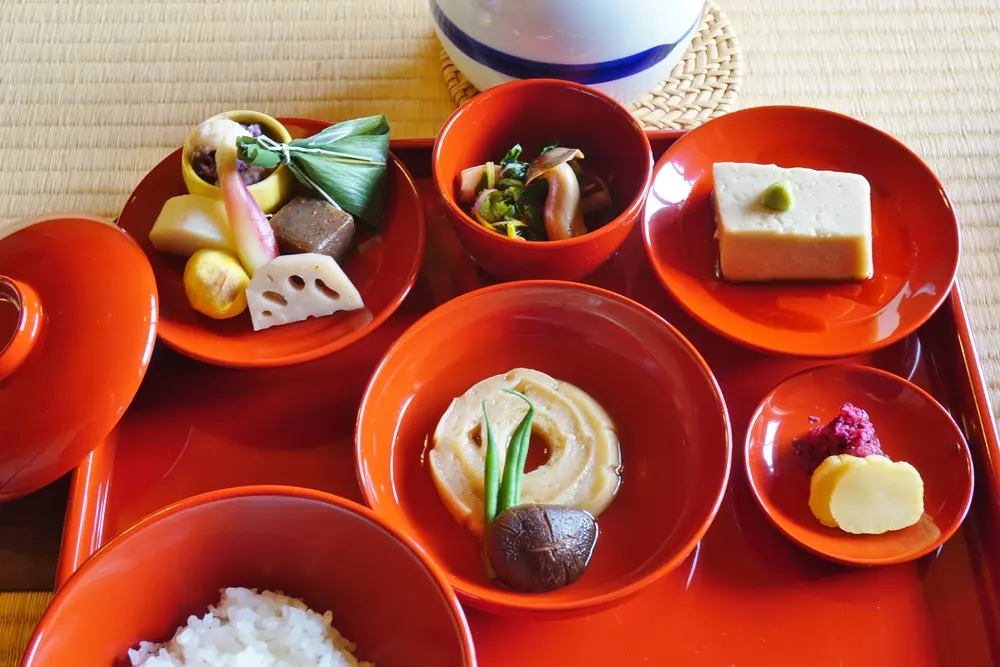
Influenced by Zen Buddhism, Shojin Ryori is a vegetarian cuisine that avoids using animal products. Dishes like goma-dofu (sesame tofu) and nasu dengaku (miso-glazed eggplant) are common, showcasing the simplicity and spiritual aspect of Kyoto’s food culture.
3. Seasonal Delicacies
Kyoto’s cuisine changes with the seasons, each bringing its own unique flavors and ingredients.
Spring
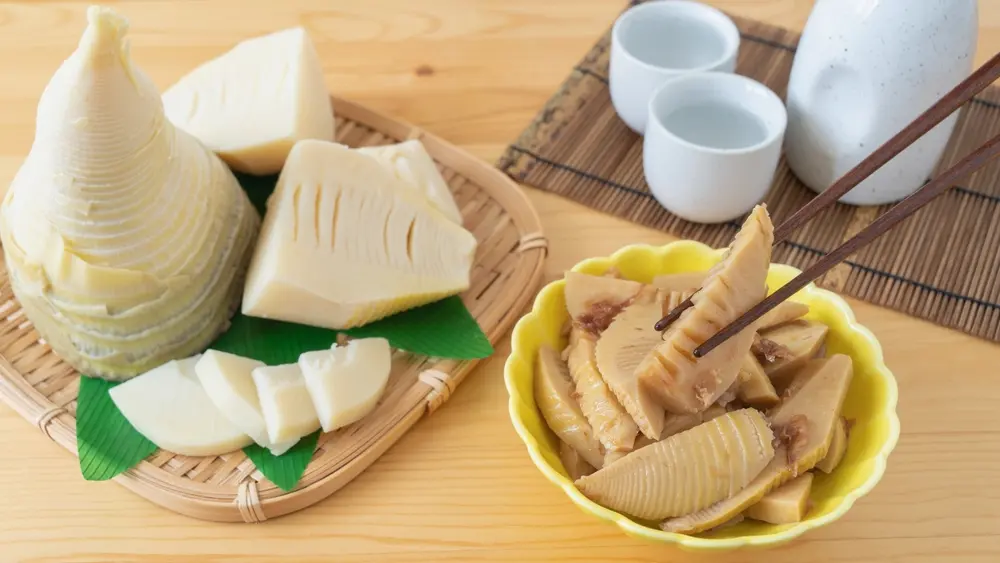
Spring in Kyoto is marked by the arrival of bamboo shoots (takenoko) and cherry blossoms. Dishes like takenoko rice and sakura mochi (cherry blossom rice cakes) are popular during this time.
Summer
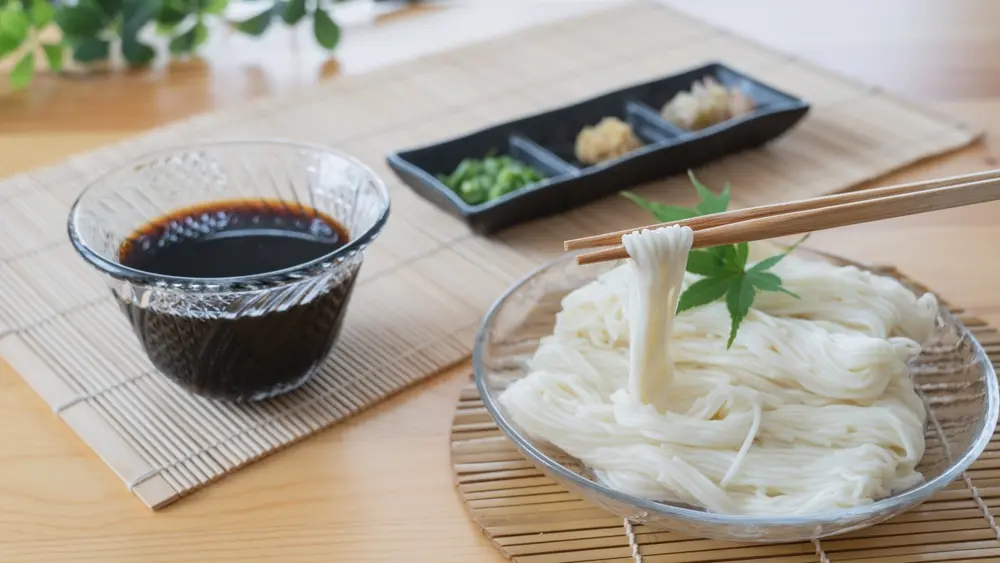
Summer brings the refreshing Hamo dishes, often served with a light vinegar sauce or in a hot pot. Cold noodles like Hiyashi Somen are also a summer favorite.
Autumn
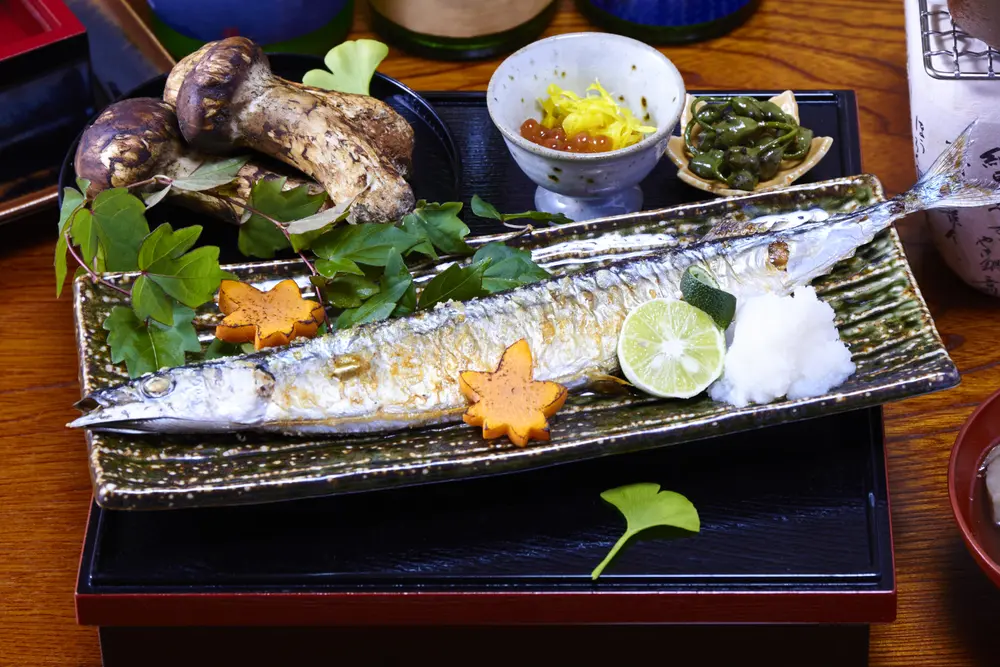
Autumn is the season for Matsutake mushrooms and grilled sanma (pacific saury). The earthy flavors of these ingredients are perfect for the cooler weather.
Winter
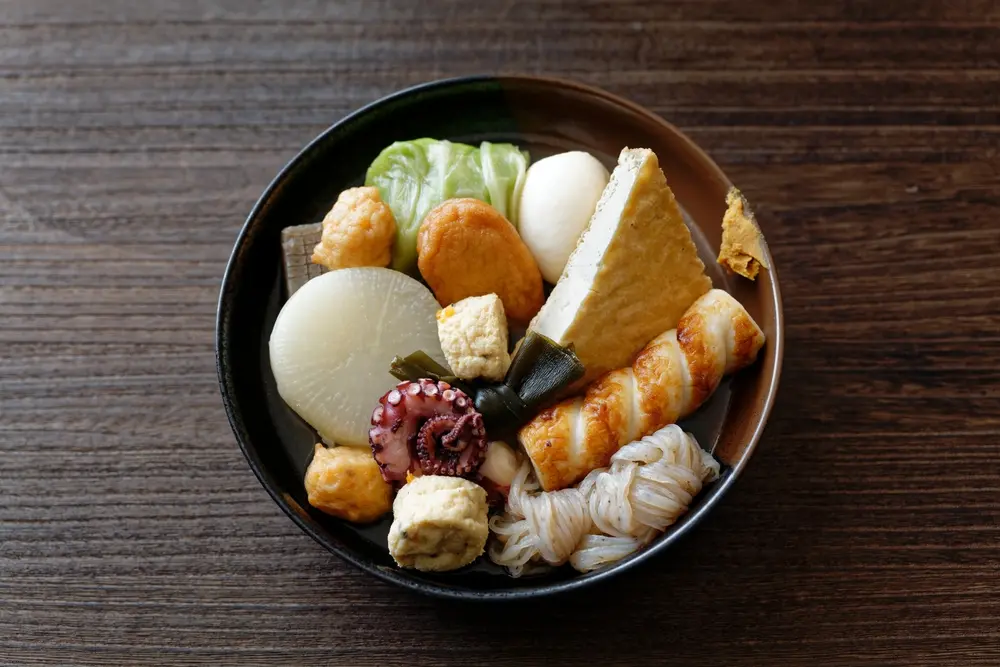
Winter calls for hearty dishes like Oden (a type of hot pot) and Kabura-mushi (steamed turnip with fish). These dishes are designed to warm the body and soul.
4. Kyoto’s Markets and Food Strolling Spots
Kyoto’s markets are a treasure trove of culinary delights.
Nishiki Market
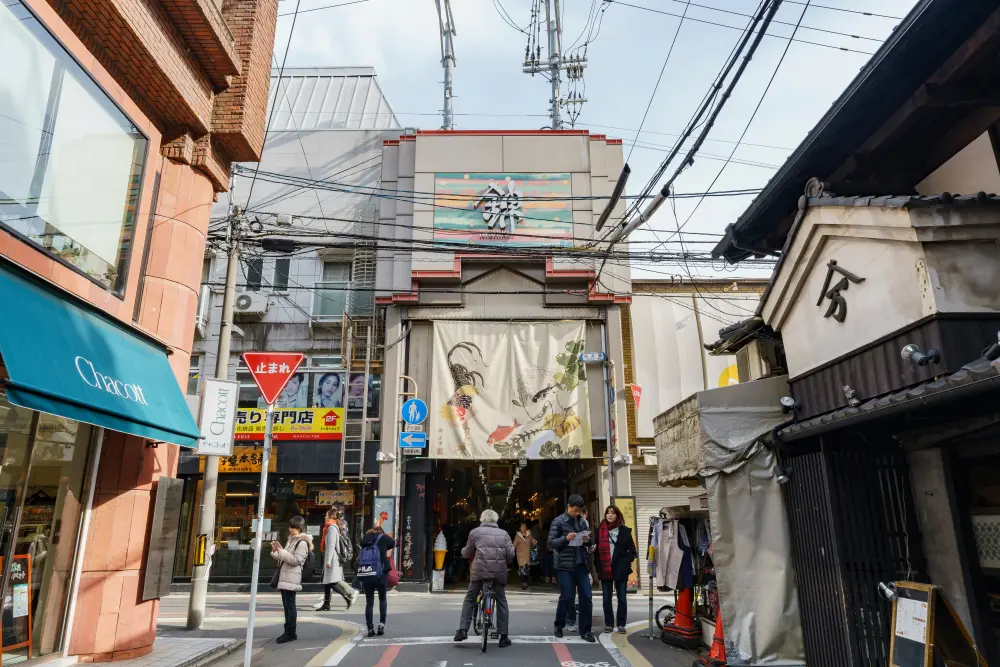
Known as “Kyoto’s Kitchen,” Nishiki Market is a bustling place filled with vendors selling fresh seafood, pickles, spices, and street food. It’s the perfect spot to sample a variety of Kyoto’s traditional snacks.
Gion and Pontocho
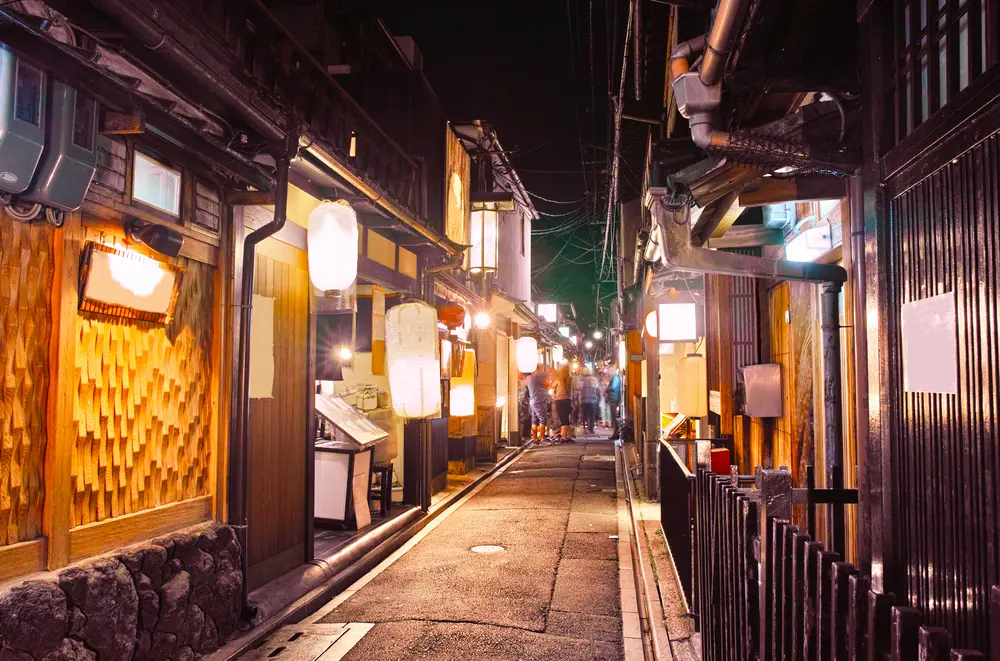
These historic districts are not only famous for their geishas but also for their food. Wander through the narrow streets and enjoy local delicacies like matcha sweets and yuba dishes.
Gion
Pontocho
Local Sweets Shops
Kyoto is also renowned for its wagashi (Japanese sweets). Shops specializing in mochi, daifuku, and matcha-flavored treats are scattered throughout the city.
5. Experiencing Kyoto’s Food Culture
Kyoto offers numerous ways to immerse yourself in its food culture.
Tea Ceremony Experience
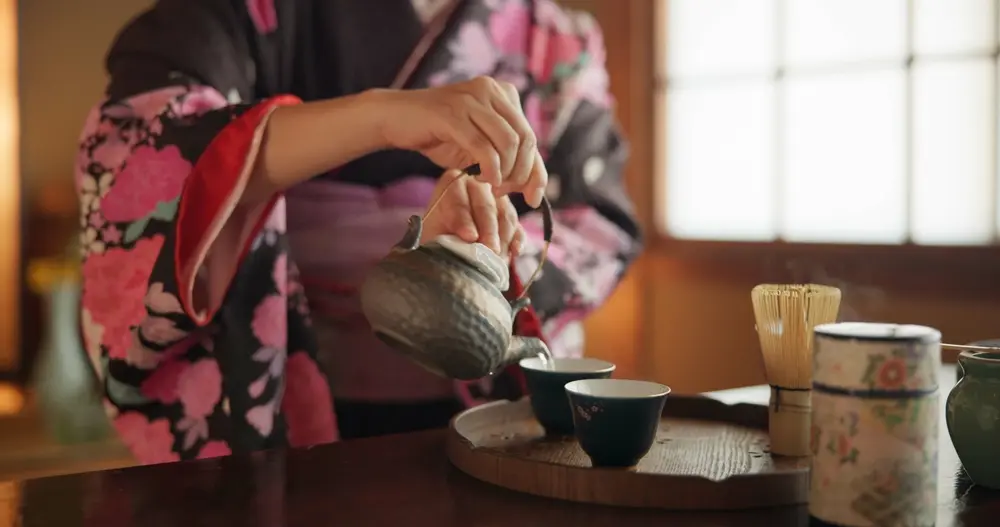
Participate in a traditional tea ceremony to appreciate the art of matcha preparation and the philosophy behind it.
Cooking Classes
Join a cooking class to learn how to make classic Kyoto dishes like tempura, sushi, and miso soup.
6. Famous Restaurants in Kyoto
Kyoto boasts a wide range of restaurants, from luxurious kaiseki ryotei to cozy cafes.
High-end Ryotei in Gion
Enjoy an authentic Kaiseki meal in one of Gion’s prestigious ryotei. The ambiance and food here offer a glimpse into Kyoto’s aristocratic past.
Modern Fusion Restaurants
Kyoto also embraces modernity with restaurants offering creative fusion dishes that blend traditional Japanese and international flavors.
Hidden Cafes and Restaurants
Discover Kyoto’s hidden gems – quaint cafes and restaurants tucked away in narrow alleyways, serving everything from hearty meals to delicate desserts.
7. Modern Influences and Kyoto’s Contemporary Food Scene
While Kyoto’s culinary traditions are deeply respected, the city also embraces modern influences.
Fusion Cuisine
The rise of fusion cuisine has brought innovative dishes that combine Kyoto’s traditional ingredients with international flavors. Sushi with a twist, matcha-infused pastries, and unique ramen variations are now part of Kyoto’s vibrant food scene.
International Restaurants
Kyoto’s food landscape is also enriched by the presence of high-quality international restaurants. From French patisseries to Italian trattorias, there’s a diverse range of dining options that cater to global tastes.
Conclusion
Kyoto’s food culture is a beautiful tapestry of tradition, seasonality, and innovation. Whether you’re savoring a meticulously prepared kaiseki meal or enjoying street food at Nishiki Market, the culinary experiences in Kyoto are sure to leave a lasting impression. So, when you visit Kyoto, be sure to indulge in its rich culinary heritage – it’s an essential part of the city’s charm.
